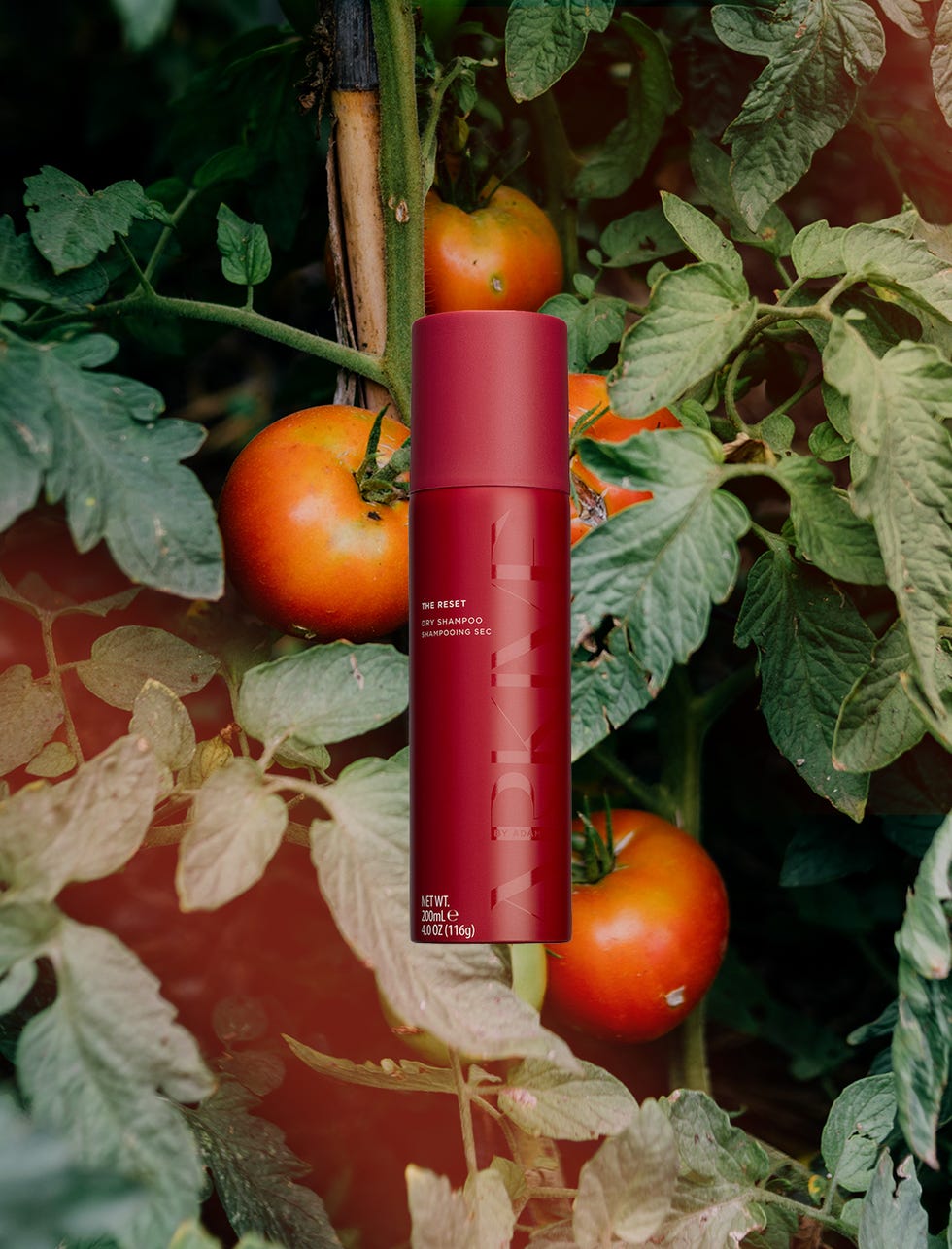So, Everyone Wants to Smell Like a Tomato Now?
In the pantheon of fragrance ingredients, there are some notes that formulators return to over and over again, like vanilla, tobacco, musk, ylang-ylang, peony, jasmine, and orange — all tried-and-true options for a new perfume or candle. But against all odds, the hottest scent of the season appears to be none other than… tomatoes.
“Vegetables have their own publicists,” says Victoria Corrales, the head of product innovation at Flamingo Estate, regarding the recent tomato renaissance. “People are exploring gourmand, more savory candles because they’re a mirror to the food we’re eating and interested in. We’ve seen vegetables and fruit experience their own rebranding [in fragrance], and tomatoes have an allure all their own.”
It wasn’t that long ago that the fruit, masquerading as a vegetable, was relegated to the kitchen, far from gracing the vanities of fragrance fans worldwide. Over the past year, however, the unexpected note is now the darling of the beauty industry. According to popular fragrance and home brands like Apotheke, Nette, Loewe, and Malin + Goetz, the booming, and continued, success of their tomato-based candles is welcome, if a tad unexpected. “I actually never thought anyone would enjoy the smell, [or would think] it was too strange,” says Flamingo Estate founder Richard Christiansen. “Now it’s our best-selling product by far.”
Tomato may be trending for summer, but it’s not the first time it has appeared in the fragrance space. Instead, consumer attitudes toward the note, and tomatoes in general, are shifting. Apotheke founder Chrissy Fichtl realized this when she discovered that sales for her Tomato Tarragon candle surged over the past few months, despite launching the brand with the scent in her original lineup eight years ago. The reason? “We’re embracing nostalgia, and those who grew up with hyper-literal food-inspired scents are now looking for an elevated iteration that leaves a bit of mystery,” she explains.
While consumer curiosity can account for some of the scent’s recent popularity (honestly, what does a tomato even smell like?), many founders that have seen success via their tomato offerings cite people’s positive association with the fruit. “From tomato sandwiches in the summer, to the heirloom tomatoes at the farmers’ markets, to that delicious bowl of pasta your grandmother used to make, there is so much to love about tomatoes,” says Nette founder Carol Han Pyle. “There is also something so fresh about a tomato scent in the home when done well.”
The scent is not just limited to home fragrances. Personal care products are also joining the tomato craze, with equally heartwarming anecdotes to match. For instance, ARKIVE Headcare founder Adam Reed was inspired by afternoons in his grandmother’s greenhouse, where she grew tomatoes, among other leafy greens. Decades later, tomato leaf is now one of the top notes for No One Elsie, one of three bespoke fragrances featured throughout his hair collection.
But for as popular as tomatoes have become in recent months, replicating one in a candle or perfume format is more challenging than it may seem. “At the risk of disappointing some, tomato or tomato leaf essence does not exist,” reveals Carrière Frères Creative Director, Julien Pruvost, about the brand’s Tomato Room Spray and Tomato candle (which were both formulated by perfumer Karine Chevalier). “It is recreated entirely from synthetic and natural molecules that have nothing to do with tomatoes.”
Synthetic scents are not uncommon in the world of perfumery, wherein some notes are impossible to distill from the source raw material. Rather, a type of olfactory alchemy is required — a merging of art and science — in order to replicate the essence of a certain smell without actually having the note itself available. For Chevalier, it took a combination of green and fruity notes, like blackcurrant sulfur (which Pruvost explains is close to crumpled tomato leaves), to recreate the scent of a tomato in a recognizable way for the brand.
“With tomato scents, you have to have some creativity around it,” says Han Pyle. “A ripe tomato typically doesn’t have a super strong scent. It’s fairly watery. So, you have to create a story around what your perception of a tomato scent is and what it feels like to you.” For her brand Nette, that meant utilizing notes like basil, mimosa and orange flowers, and sea salt in the Laide Tomato Candle to capture a moment you might be surrounded by tomatoes.
“Contrary to what one might expect when they hear ‘tomato,’ our tomato candle is fresh and green,” says Malin + Goetz co-founder Andrew Goetz. ”It takes its inspiration from the plant and leaves rather than the fruit. You’ll find notes of basil, green ivy with hints of lavender, mint, and some underlying notes of cedar wood and green pepper [so that] when you burn it, it’s almost as if you are in the garden itself.”
In fact, once you consider its connection to home, gardens, vacations, and your grandmother’s kitchen, among other things, it’s not so surprising that tomatoes are trending in the beauty and home spaces. After all, with the pandemic still uncomfortably close in the rearview mirror, anything that can replicate simpler times spent with friends and family sounds (or rather, smells) like the perfect addition to your fragrance library for summer.

Hannah Baxter is a beauty and wellness writer, consultant, and the former deputy beauty editor at The Zoe Report, where she oversaw the site’s beauty vertical. Previously, she was senior beauty editor at Coveteur, and now regularly contributes to outlets including Allure, Byrdie, Harper’s Bazaar, Glamour, Bustle and more. She’s also the founder of Anxiety Beer, a bi-monthly newsletter that destigmatizes conversations around mental health.



